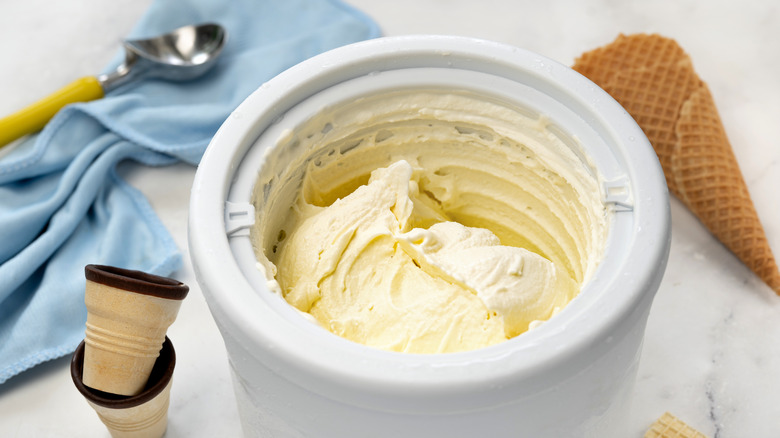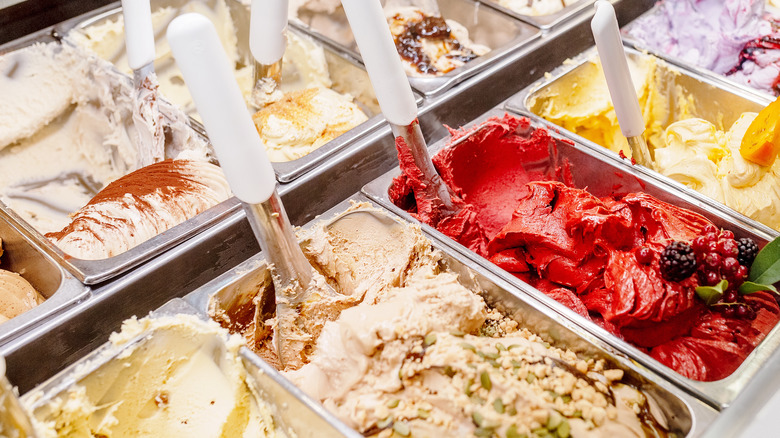The Reason Soft Serve Isn't Technically Considered Ice Cream
Soft serve and ice cream are both delicious frozen treats, but despite their similar appearance and taste, they aren't the same. Beyond the distinction that one is scooped from a tub and the other is served from a machine, the biggest difference comes down to the ratio of each dessert's milk fat proportions.
Both ice cream and soft serve are made with largely identical ingredients, including milk, cream, sugar, and flavorings. Yet, for a product to be labeled as ice cream, it must contain at least 10% milk fat. Soft serve, on the other hand, usually has just 3% to 6% milk fat. This distinction also leads to clear textural differences, with hard ice cream having a denser, icier body compared to soft serve's silky smooth consistency.
Another major divergence between the two is how eggs are used. Although not all brands of ice cream use egg yolks, it is a fairly common ingredient. They add richness and a smoother texture to ice cream and also help emulsify its other ingredients. Soft serve, for its part, does not traditionally contain any yolks.
Churning and the role of air in the two treats
Ice cream and soft serve also diverge in the way they're made, and the amount of air introduced during the process. Hard ice cream begins life as a liquid base that's been pasteurized and then churned while it's cooled. In order to make soft serve, you need to begin with a liquid or powdered mix that's blended in a specific machine. Whereas ice cream is stored in separate containers after churning, soft serve is kept in this machine at a constant temperature of 18 to 24 degrees Fahrenheit.
Both desserts have air whipped into them while they're being made, but soft serve contains a larger amount. Air pockets are introduced while it's whipped, which gives it its fluffier, smoother texture. Ice cream also contains air, but there are rules in place about how much can be added. For a retail product to be labeled as ice cream, it must weigh at least 4.5 pounds per gallon. As you add air to the mixture, the weight decreases and a limit will eventually be reached that's less than soft serve.
What about custard, gelato, and frozen yogurt?
Custard and soft serve are sometimes used interchangeably as well, and while all custard is soft serve, not all soft serve is custard. Whereas soft serve may have 35% to 45% air content, custard sits around 15% to 30%. This gives it a denser texture and a richer flavor. Custard also must contain at least 1.4% egg yolks, making it creamier than hard ice cream or its soft serve cousin.
Gelato is another frozen dessert that is different from ice cream. It contains between roughly 4% to 9% milk fat, while also featuring less air than ice cream. Beyond this, gelato uses less egg yolks and sometimes, no egg products at all. To achieve its velvety, spreadable texture, gelato is served at a warmer temperature. Ideally, the lower fat content of gelato should allow fresher flavors to shine through, as they aren't dulled by the presence of dairy fat.
Finally, frozen yogurt is another option sometimes compared to soft serve due to its consistency. Where soft serve is made with milk and cream, the dairy content of frozen yogurt comes entirely from cultured milk. Frozen yogurt therefore has less fat, while also sometimes containing more sugar to compensate for its tangy taste.



